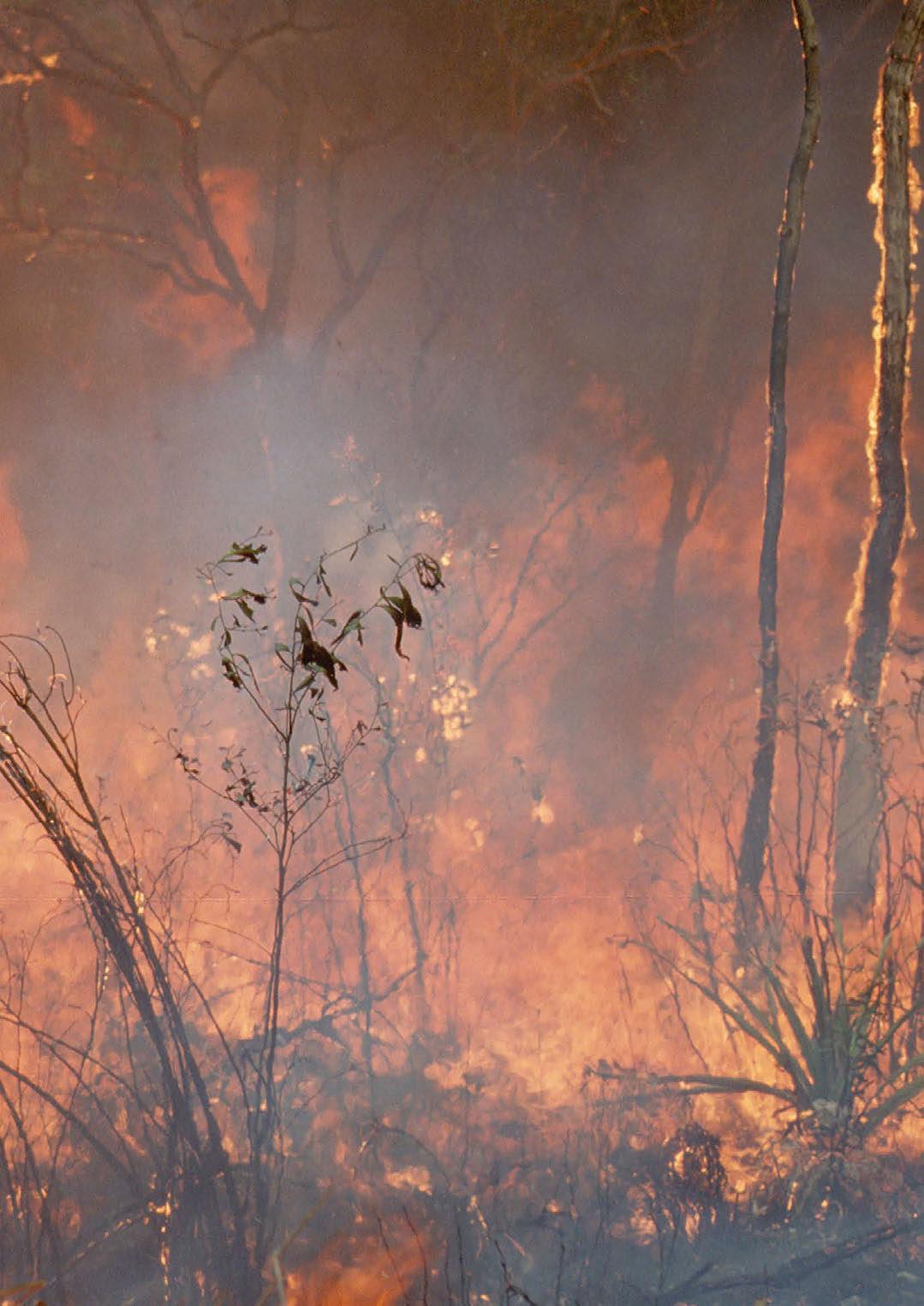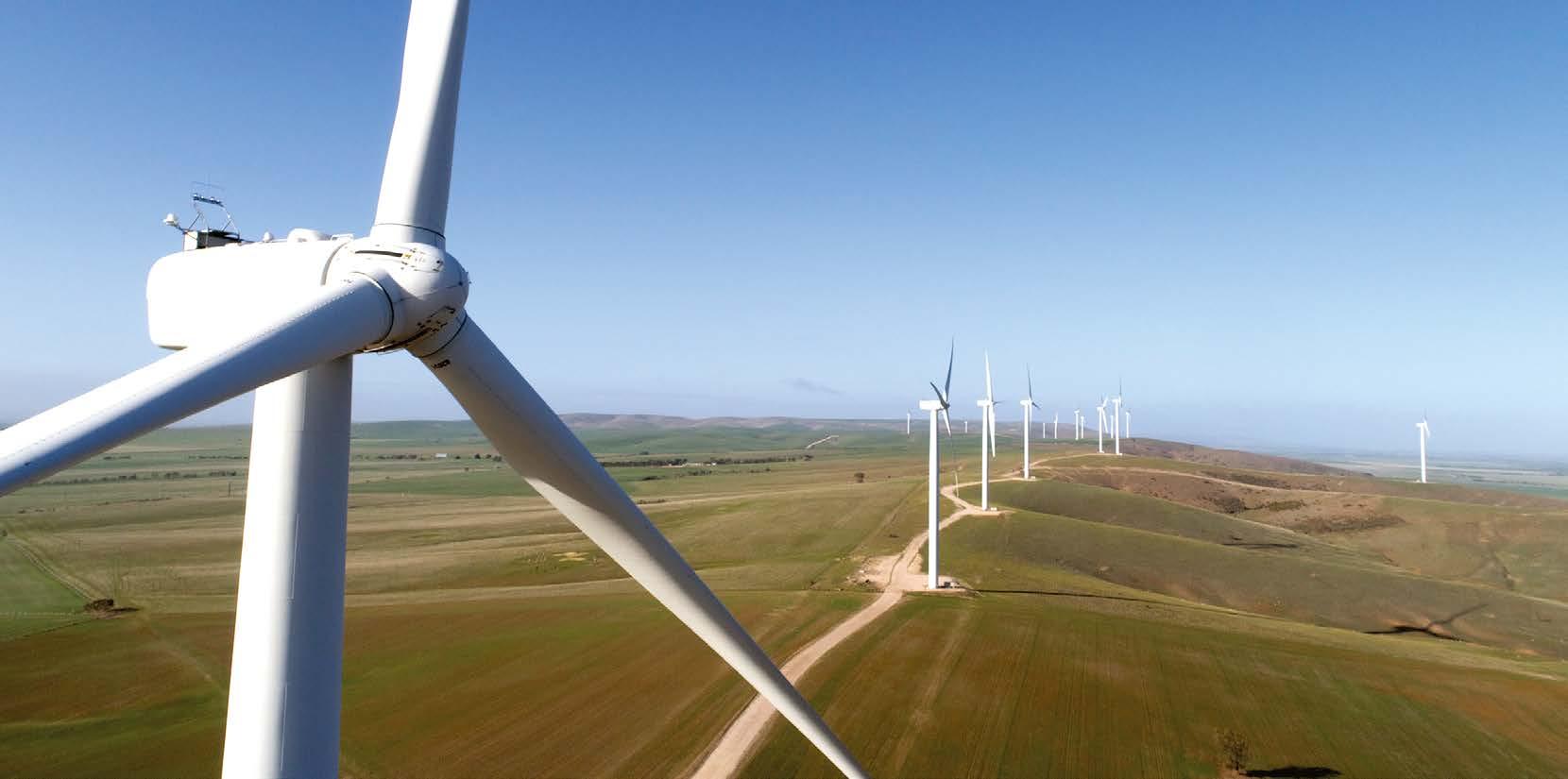
7 minute read
Walcha: the rise of a 4 GW power plant
4 GW plant: setting a new benchmark
The landscape in the heart of New England is destined for a makeover of epic proportions: wind farms with a combined capacity of 3400 MW and utility scale solar farms with a capacity of 350 to 650 MW. Also on the drawing board is pumped hydro-electricity storage. At the helm of the project is renewable energy trailblazer Simon Corbell who championed 100 per cent renewable energy in the ACT and went on to guide large scale developments in Victoria. Here the world leading renewable energy advocate who has taken a key role with Energy Estate speaks to Smart Energy about the development of the nation’s most ambitious project to date, the 4 GW Walcha (pronounced ‘Wolka’) Energy Project.
Advertisement
The proposed development is significant on many levels, but first things first, how does the local community view it and what involvement might they have? The Walcha Energy Project is the result of a long and detailed conversation with the community over the past 14 years and there has been no indicated opposition to renewable energy development in the region as whole to date.
The idea for wind development on the plateau originated with the landholders who saw the benefits of diversifying their farm revenue streams and sharing the benefits from wind development with the broader Walcha community. We have developed an innovative community ownership and revenue sharing model that will allow the benefits of the project to be shared with the near neighbours and the community.
We are also committed to using local talent, creating local jobs and using the local supply chain for the project which will generate a range of opportunities for business and individuals across the region. We will be encouraging local companies to participate in the project and identifying the areas where investment and training is required.
More information and to register details visit www.walchaenergy.com.au/contractor-enquiryform.html
Is the project on track to commence development this year and construction next year? Walcha Energy and its partners continue to progress with the planning and development phases of both the solar and wind projects. We continue to work with the community,
landholders, government and other key stakeholders through the planning pathway including relevant studies and commencing the grid connection process.
The planning process for solar typically takes around one year and for wind it is longer, being two to three years, as relevant studies and approvals are sought. We would begin construction as soon as all necessary approvals are in place, and still believe that generation will commence in 2022. Do you foresee any hurdles or challenges to the anticipated processes?
The existing transmission lines will accommodate the expected generation from the proposed solar farm as well as the first stage of wind at Winterbourne and Moona. This is in large part due to the natural balance of solar generation occurring during the day and wind generation, primarily occurring at night. Unlike many others, this project comes with the advantage of strong grid availability and proximity to key interconnectors for regions. What can you tell us about the Uralla Renewable Energy Hub and proposed transmission lines?
Transmission infrastructure is critical, we need to be able to take electricity that is clean, cheap and abundant to the locations that need it such as the eastern seaboard, large industrial centres and large metro areas.
With the identification of the NSW Renewable Energy Zones, both AEMO and Transgrid acknowledge the need for grid augmentation

A blank canvas: the Walcha Energy project is the largest ever integrated wind solar and pumped hydro energy storage of its type proposed in Australia.

and the need to invest in new forms of transmission infrastructure in the region.
The proposed Uralla hub was included in AEMO’s 2018 Integrated System Plan and TransGrid’s Transmission Annual Planning Report 2018. Powerlink and Transgrid have also included the Uralla hub in their Project Specification Consultation Report (PSCR) which outlines options for a new NSW-Queensland interconnector.
For the New England REZ, which the Walcha Energy Project is part of, we’ve identified the need for a new substation at Uralla. We believe Uralla would be the optimal location given its position on the REZ and the number of proposed projects in close proximity to it.
The Uralla Hub offers the opportunity to unlock the rest of the New England REZ’s vast resources, potentially to serve as an interconnector with Queensland, and will also assist with transmission for later phases of the Walcha Energy Project.
A hub at Uralla will be a critical piece of infrastructure that allows multiple renewable projects to plug into it and unlock additional capacity across the New England region.
Although the existing transmission lines will accommodate the expected generation of Walcha Energy Project’s solar and first stage of wind, the existing network would not withstand the proposed generation capacity of the later stages and the generation of other proposed renewable projects in the REZ. The Uralla hub would help facilitate multiple projects’ connection points, maximise generation into the NEM and fully unlock the identified REZ’s very resource rich areas of solar, wind and pumped hydro energy storage. Now a key question: what are the estimated costs of the project and how will it be funded, also, what about offtake agreements or PPAs? The Walcha Energy project will be built in stages. The total project costs are estimated to be within a range of $3 to $6 billion. One of the large variables in the costs is the amount of storage which is integrated into
Pumped hydro energy storage
Deep gorges to the east and south of the Walcha plateau provide the right topography for pumped hydro storage. Energy Estate is entering the feasibility stage of exploring PHES on the Dungowan Dam in the Tamworth region. PHES will allow for a level of storage and detachable energy supply that will help meet the demand of the grid as the coal fire powered stations are decommissioned beginning in 2022.
As well as Dungowan Dam there are other feasible options for PHES across the plateau that will be investigated further during the development phase. the project such as battery energy storage systems and pumped storage hydro.
Different funding models will be used, for example storage may be tendered out to interested third parties under capacity contracts and the wind and solar projects will enter into PPAs with retailers and other market participants.
Walcha Energy will become a very significant part of the NSW generation mix and will be strategically located.
For this reason we believe it is important this capacity is made available to the market rather than hoarded by any one player. Would you like to elaborate on the “innovative benefit sharing and ownership model for near neighbours, distant neighbours and the general community”?
Sharing the benefits of the renewable energy transition is very important and we take this very seriously. To avoid the ‘winners’ and ‘losers’ situation the Walcha Energy Project has focused on developing a revenue sharing plan with hosts and neighbours sharing fairly in project revenues. We identify that the closer you are to the project, either as a neighbour or as a host for infrastructure, then you are receiving a particular amount of benefit from the project. The further away someone is from the project, that benefit amount declines, but they are still sharing in the benefits. We believe that this mechanism creates a more equitable community benefit.
In addition a community fund will be set-up for the Walcha Council to ensure they have an ongoing fund to invest in infrastructure and the local community. And finally, has the widespread drought in regional NSW had an impact on local sentiment toward clean energy vs old coal plants? Communities both in NSW and across Australia that have been affected by the widespread droughts are experiencing firsthand the effects of climate change and the long-term consequences of our reliance on coal and other carbon-intensive energy generation. Coal-fired power plants are also major users of water so there is the potential to reduce this drain on our fragile and strained water resources.
The Walcha Energy Project believes that increasing the supply of clean, renewable energy and reducing our dependence on coal fired power stations will have a positive impact on climate change and subsequently will benefit our overall environment. We hope that is a factor for everyone to consider as they look to bring renewable energy into their communities.
Importantly, the energy produced by this project will be cheaper and help NSW transition to a cleaner future where energy becomes affordable for all.
Simon Corbell will continue his roles as an Adjunct Professor at the University of Canberra, Honorary Associate Professor at the ANU and a Patron of the Australian Smart Energy Council.










